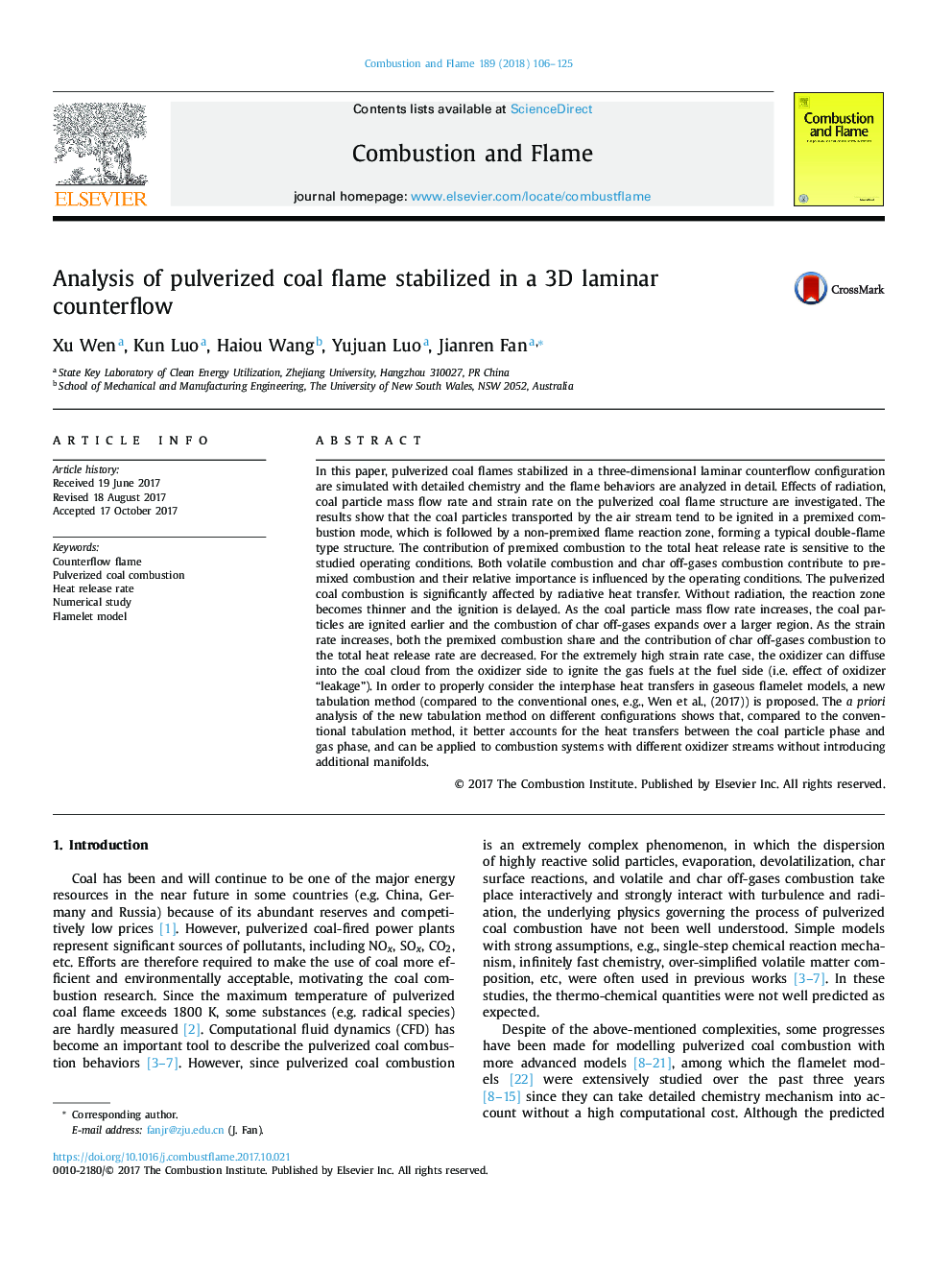| Article ID | Journal | Published Year | Pages | File Type |
|---|---|---|---|---|
| 6593894 | Combustion and Flame | 2018 | 20 Pages |
Abstract
In this paper, pulverized coal flames stabilized in a three-dimensional laminar counterflow configuration are simulated with detailed chemistry and the flame behaviors are analyzed in detail. Effects of radiation, coal particle mass flow rate and strain rate on the pulverized coal flame structure are investigated. The results show that the coal particles transported by the air stream tend to be ignited in a premixed combustion mode, which is followed by a non-premixed flame reaction zone, forming a typical double-flame type structure. The contribution of premixed combustion to the total heat release rate is sensitive to the studied operating conditions. Both volatile combustion and char off-gases combustion contribute to premixed combustion and their relative importance is influenced by the operating conditions. The pulverized coal combustion is significantly affected by radiative heat transfer. Without radiation, the reaction zone becomes thinner and the ignition is delayed. As the coal particle mass flow rate increases, the coal particles are ignited earlier and the combustion of char off-gases expands over a larger region. As the strain rate increases, both the premixed combustion share and the contribution of char off-gases combustion to the total heat release rate are decreased. For the extremely high strain rate case, the oxidizer can diffuse into the coal cloud from the oxidizer side to ignite the gas fuels at the fuel side (i.e. effect of oxidizer “leakage”). In order to properly consider the interphase heat transfers in gaseous flamelet models, a new tabulation method (compared to the conventional ones, e.g., Wen et al., (2017)) is proposed. The a priori analysis of the new tabulation method on different configurations shows that, compared to the conventional tabulation method, it better accounts for the heat transfers between the coal particle phase and gas phase, and can be applied to combustion systems with different oxidizer streams without introducing additional manifolds.
Related Topics
Physical Sciences and Engineering
Chemical Engineering
Chemical Engineering (General)
Authors
Xu Wen, Kun Luo, Haiou Wang, Yujuan Luo, Jianren Fan,
